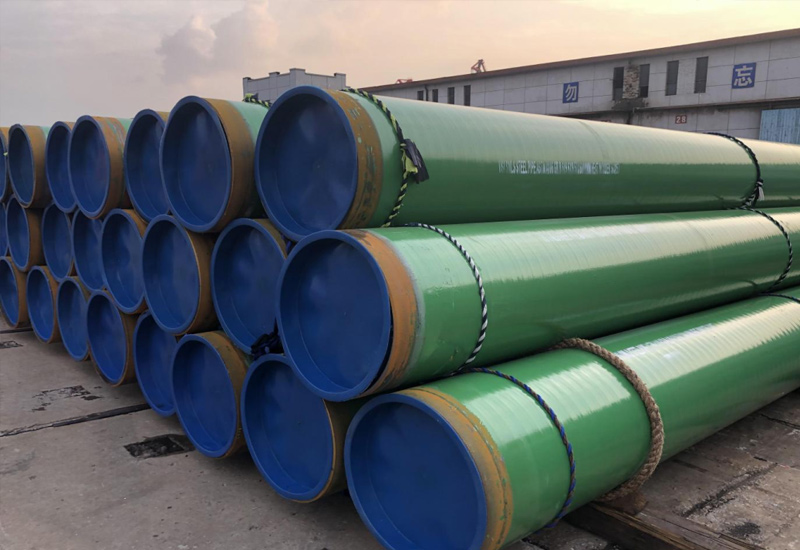HOT BLOG TAGS
JIS G3444
JIS G3444:1994 – Carbon Steel Tubes for General Structural Purposes
1. Standard Definition and Background
JIS G3444 is the standard of carbon steel tubes for general structural purposes, established by JISC, The Japanese Industrial Standards Committee. (Note) The JIS G3444:1994 standard has been added to this standard. This Standard specifies the carbon steel tubes (hereafter referred to as “tubes”) used for civil engineering, architecture and other structures. The code promotes structural safety and economy, through the appropriate use of materials and workmanship.
Key Technical Features:
Manufacturing Flexibility: We produce plates, seamless, ERW (Electric Resistance Welded), FW (Furnace Welded), and fully continuous arc-welded (spiral and longitudinal) pipe.
Not Heat Treated:Manufacturing typically does not include heat treating to save on production costs
Size: For welded tubes of ≤318.5mm OD and for all seamless tubes; For piles ≥318.5mm OD JIS A5525 is applied
Note the above: The JIS system is technically not compatible with ANSI/ DIN; the JPI standards gives the ANSI equivalent for interchangeability.
2. Scope of Application
2.1 Primary Applications
| Sector | Typical Components | Recommended Grades |
| Civil Engineering | Bridge supports, slope piles | STK290, STK400 |
| Construction | Scaffolding, building frames | STK290, STK500 |
| Power Transmission | Towers, utility poles | STK400, STK490 |
| Industrial Systems | Machinery supports, racks | STK500, STK540 |
2.2 Limitations
Load Type: Static loading only (dynamic loads require additional verification)
Temperature: -30°C to 120°C (low-temp applications need toughness validation)
Environment: Neutral soils (pH 4-10); corrosive environments require protective coatings
3. Material Technical Requirements
3.1 Grade Classification and Chemical Composition
Table 1: Chemical Composition (Ladle Analysis, wt%)
| Grade | C≤ | Si≤ | Mn≤ | P≤ | S≤ | Special Requirements |
| STK290 | – | – | – | 0.050 | 0.050 | – |
| STK400 | 0.25 | – | – | 0.040 | 0.040 | – |
| STK500 | 0.24 | 0.35 | 0.30-1.30 | 0.040 | 0.040 | – |
| STK490 | 0.18 | 0.55 | 1.50 | 0.040 | 0.040 | Low-carbon design for weldability |
| STK540 | 0.23 | 0.55 | 1.50 | 0.040 | 0.040 | Custom agreement for t>12.5mm |
Key Controls:
Strict P/S limits (≤0.040%) to minimize cold brittleness
STK490’s low carbon (C≤0.18%) optimizes weldability
Micro-alloying (V, Nb) permitted for grain refinement
3.2 Mechanical Properties
Table 2: Mechanical Requirements
| Grade | Tensile Strength (MPa) | Yield Strength (MPa) | Elongation (%) | Flattening Test (H≤) |
| STK290 | ≥290 | ≥175 | ≥25 | 0.85D |
| STK400 | ≥400 | ≥235 | ≥23 | 0.85D |
| STK500 | ≥500 | ≥355 | ≥15 | 0.85D |
| STK490 | ≥490 | ≥315 | ≥23 | 0.85D |
| STK540 | ≥540 | ≥390 | ≥20 | 0.85D |
Special Provisions:
Thin-Wall Adjustment: For t<8mm, elongation may decrease 1.5% per 1mm thickness reduction
Weld Strength: Welded tube joints must achieve ≥95% of base metal strength
4. Dimensions and Tolerances
4.1 Size Ranges
Outside Diameter (OD): 10.2–318.5 mm (welded tubes)
Wall Thickness (t): Agreement-based (refer to JIS G3454 Sch series)
4.2 Key Tolerances
Table 3: Geometric Tolerances
| Parameter | Permissible Deviation | Conditions |
| Outside Diameter | ±0.5mm or ±0.5% OD | OD≤50mm / OD>50mm |
| Wall Thickness | ±12.5% t (Light) / ±10% t (Heavy) | Per manufacturing agreement |
| Pipe End Ovality | ≤1% OD | Within 100mm from end |
| Straightness | ≤0.2% of tube length | Full-length measurement |
Special Cases:
Welded tubes >350mm OD: End tolerance ±0.5mm; body tolerance ±0.5%
Large-diameter measurement: Use circumference method (π=3.14)
5. Testing and Quality Control
5.1 Mandatory Tests
Mechanical Tests:
Tensile Test: 2 samples per ≤100-tube batch (weld excluded)
Flattening Test: Mandatory for welded tubes; compress to H≤0.85D without cracking
Bend Test (Optional): 90° bend with mandrel radius ≤8t upon request
Non-Destructive Testing:
100% UT or RT for welded tubes (RT acceptance: JIS Z3104)
5.2 Defect Handling
Surface Defects: Repair/remove if depth >12.5% wall thickness
Weld Defects: No lack of fusion or through-thickness cracks permitted
6. Engineering Applications and Evolution
6.1 Grade Selection Guide
| Application | Recommended Grade | Key Advantage |
| Low-cost scaffolding | STK290 | Cost-effective, El≥25% |
| High-strength supports | STK540 | Tensile strength ≥540 MPa |
| Welded-intensive frames | STK490 | Superior weldability (C≤0.18%) |
6.2 Limitations and Development
Wall thickness series: No standard series, depends on agreements
Compatibility and interoperability International Working : Technically NOT compatible with ANSI/DIN, but acceptable for use with JPI standards
Future Prospects: High strength steels (STK600) and environment-friendly weathering steel
7. Conclusion and Implementation
JIS G3444 serves as Japan’s cornerstone standard for structural tubing through:
Strength-Graded Design: Five grades for optimized material selection
Process Efficiency: No-heat-treatment requirement reduces costs
Safety Assurance: Strict P/S controls (≤0.040%) ensure low-temperature toughness
Critical Implementation Notes:
Avoid STK290 for dynamic loads (e.g., seismic bracing); use STK400+
Specify weld inspection method (UT/RT) and acceptance criteria in orders
Measure large-diameter tubes (OD>350mm) via circumference method
Standard Transition:
For piles ≥318.5mm: Use JIS A5525
For pressure piping: Apply JIS G3454 (Sch thickness series)
Related Products
Share:
HOT TAGS
latest posts
- Introduction:Technology differences determine success or failure, and selection needs to be “precise”
- FBE Steel Pipes: Corrosion Protection Redefined
- DIN 30671: A Guide to FBE Coating for Steel Pipes
- A Guide to Structural Pipe: ASTM A500vsEN10219
- Weld Seam Integrity: A Deep Dive into LSAW vs. SSAW Pipe









